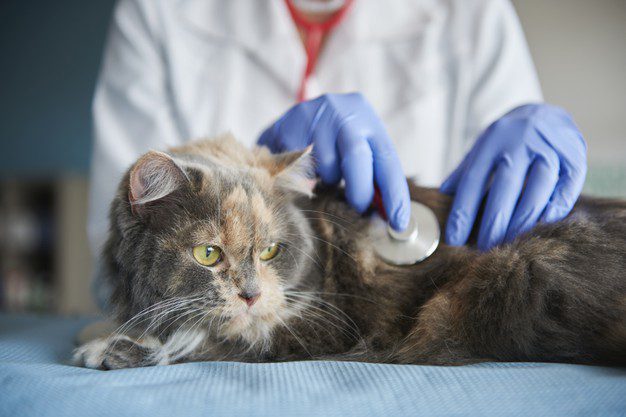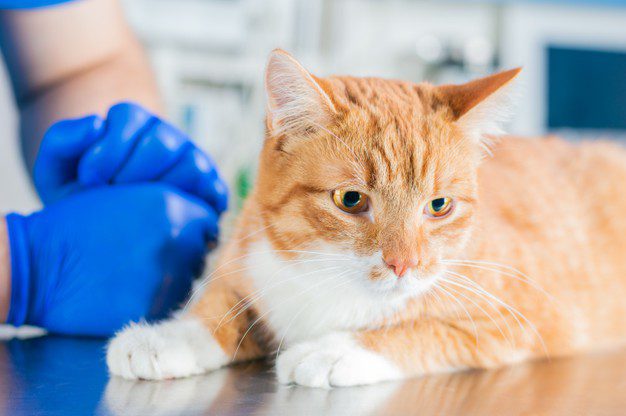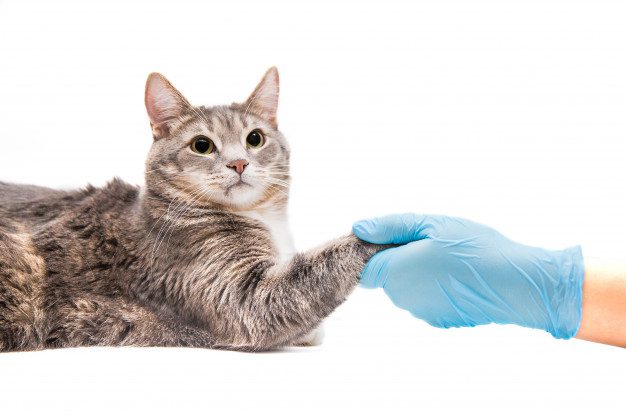Helping your veterinarian make the diagnosis could save your cat from facing unforeseen circumstances. Being a cat veterinarian is like being pediatrician. We can’t ask what is wrong with our patients. It’s got to be figured out. And nowhere the duty of a cat owner more essential than a veterinarian often makes the difference between life and life in a decent past.
Veterinarians are faced with a variety of diagnostic challenges on a daily basis. The ability for a veterinarian to obtain a detailed and complete history is our most important diagnostic tool. This material, if properly understood, lays the basis for a rational diagnostic which clinical design, and can protect the patient as well as the owner of unnecessary diagnostic tests and prolonged suffering.
Having discussed briefly the specific concern, you will attempt to collect both factual and subjective evidence to assist the veterinarians in making a diagnosis. Accurate details include reporting, the climate, nutrition and medical records, among the examples.

Signal
The signal includes the age, race, and sex of the animal, including whether the cat is spayed or neutered. This knowledge is simple, essential. In certain age groups, such diseases appear to affect cats. Hyperthyroidism, for example, is a glandular syndrome that, behind the ravenous appetite, leads cats to lose weight. This illness is an old age, with cats under the age of eight rarely affecting. A weight loss and outstanding appetite for a 10-year-old cat is warranting a blood test to assess thyroid function. It is more likely that a five-year-old cat with the same symptoms would have something different, for example pancreatic or inflammatory bowel conditions. Even if you’re not sure of the exact age, an accurate approximation can be very useful for a veterinarian.
Certain breeds are primed to certain diseases, and recognizing the breed will assist veterinarians in selecting the appropriate diagnostic tests. Persians are vulnerable to polycystic kidney diseases; Abyssinians are indeed at high risk for kidney amyloidosis; and Maine Coons is prone to cardiomyopathy. Sexual identity or gender also contains useful information. Cystitis is most often in a female cat straining to urinate. If a male cat strains to urinate, he might have a urinary block, which may be fatal if not treated quickly. When it comes to deciding gender, surprisingly, there isn’t much room for error. Take a peek by raising the tail! As a result, a few simple items may assist your veterinarian in making a diagnosis and finding a solution.
Environment
Environmental history is a normal, but crucial, part of a cat’s history. Cats who are allowed to play freely or that go outside are at a much high risk of experiencing into fights with other pets, which raises their likelihood of developing cat bite abscesses or contracting feline leukemia or FIV. Free-roaming or previously escaping cats may have been exposed to pesticides or trauma, which is rare in an indoor animal. A travel history is also important, but it is more essential with dogs than with cats. Cats are normally not allowed outside, where they are at risk of running away or being lost. Still, a travel history can be useful in assisting the veterinarian in making a diagnosis, particularly if the cat has been exposed to viruses that are common in some environments but are not widespread in the present climate. https://www.ncbi.nlm.nih.gov/pmc/articles/PMC5059607/

Dietary history
A dietary pattern or history is more than just deciding the form and brand of food you’re feeding your cat. While understanding the type of diet (dry, moist, semi-moist, table food), the brand name, any types of treats, the mode of eating (free-choice or individual meals), and the quantity is essential, veterinarians would still like to inquire about your cat’s appetite and whether there was any weight depreciation. Thus, it is important to observe your cat eating habits. Anorexia for example, whether complete or selective, is a common symptom for people to bring their cat to the veterinarian. A person who finds that their cat only chews on one side of its mouth, or that their cat has ceased consuming dry food and instead only eats canned food, is notifying the veterinarian that oral pain or irritation may be the cause of the issue, and that a detailed oral exam may be the only diagnostic check required to achieve the diagnosis.

Status of preventive treatment and previous medical records.
The veterinarian will gain useful insight by reviewing the patient’s previous medical records. If this is the first visit to this veterinarian, it would be very beneficial if you know your cat’s vaccine histories, as well as the feline leukemia virus and feline immunodeficiency virus status. Since the primary problem may be the result of an initial medical condition, medical information recording the diagnosis or treatment of any prior or current health issues are extremely important.
If the veterinarian has received the above information, he or she is able to dive further into the main concern. The past underlying the primary allegation is more subjective, and facts gathered from observant, attentive owners may be extremely valuable. Veterinarians are aware that certain pet owners are less vigilant than others. Our task is to persuade our clients to explain the cat’s dilemma from the beginning in order to achieve an ordered chronology. We’ll want to know when the cat was last normal, whether the onset of clinical symptoms was abrupt (acute) or progressively (chronic), and whether the disease responded to previous treatment or otherwise. For instance, an itchy cat that has already been injected with steroids but has not responded is more prone to have food intolerance (poor response to steroids) than flea allergic dermatitis (responds rapidly to steroids).

Depending on the primary issue, a veterinarian can go much further to help determine the problem and develop a better preventive plan. For example, if a person suspects that their cat has diarrhea, the veterinarian may ask if there is any bleeding or mucus in the feces, whether the cat has been straining in the litterbox, or if the cat has had any injuries in the home. The more positive response the client gives, it indicates that more likely is the diarrhea came from the large intestine. It therefore helps the veterinarian devise a diagnosis and treatment strategy by narrowing the list of potential sources of diarrhea
Working with breeders has its advantages
Breeders are much more observant than the normal pet owner, and they often come in with very comprehensive backgrounds. For example, t hey understand that the cat’s fur should be smooth and shiny, and they are acutely conscious whether the fur is rough or unkempt. Likewise, majority of cat owners are either reluctant or unable to take their cat’s temperature at home.
Breeders, on the other hand, seem to be unconcerned with this. This kind of information can be very informative to a veterinarian. A cat may have a borderline fever in the doctor’s office, which may be difficult for a doctor to understand since cats have high body temperatures if they are anxious. If a person asked me if their cat has a fever at home, in their familiar surroundings, I know that the fever the cat experiencing in the exam room is most definitely real and not the result of exam anxiety.
As a veterinarian, we advise the cat owners to do a short physical check on their cats in routine basis. It should require a short inspection of the eyes to ensure that they are bright and clean and clear of discharge, that perhaps the ears appeared pleasant pink color inside with no evidence of discharge or buildup of dark-colored wax, and that the nose is moist and velvety to the touch with no residue or crusting on the top. Moreover, the mouth of your cat should be inspected on a regular basis to ensure that the gums are light pink, the teeth aren’t stained or tartar-covered, and there’s no bad smell. Pet owners must also rub and pat their cat often, not just because the cat loves it, but also to check for any lumps or bumps. It is also a good idea to feel around the abdomen for any masses or swellings affiliated with the mammary glands, as mammary tumors, though not as frequent in cats as in dogs, are far more concerning in cats.

Behavioral changes can be complex for veterinarians to understand. A person clients who bring in their pet because the cat was behaving strangely, but through further questioning, it became clear that the cat was not genuinely sick, considering the change in behavior. Cats who unexpectedly avoid sleeping on the bed, despite it being their favorite sleeping spot for years, or normally loud cats who have recently been more silent, may be behaving differently, are common symptoms of behavioral changes. However, lethargy, hyperactivity, aggression, growling, and urinating or defecating in uncomfortable positions are all signs of an underlying medical condition. When in doubt about whether or not any seemingly new habits are medically important, it is wise to be vigilant and send everything to the veterinarian.
Since our patients are unable to communicate, veterinarians must rely on you, the owner, to communicate for them. The more perceptive you are, the more details you will provide us. Therefore, t his insight will help you achieve the definitive diagnosis, helping us to customize a care plan and get your companion back on the path to rehabilitation as soon as possible.
Sharrmanraj